School bus conversions, also known as “skoolies,” have gained popularity recently as a creative and sustainable approach to creating unique mobile living spaces. The process involves decommissioning school buses and transforming them into fully functional recreational vehicles or tiny homes on wheels. This innovative trend has captured the imagination of many seeking an alternative lifestyle or an affordable housing solution.
The journey to creating a skoolie begins with acquiring a retired school bus, followed by a thorough demolition of its interior. This typically involves removing the seats, flooring, wall, and ceiling panels to prepare the structure for a custom-designed transformation. The new interior of the bus can be tailored to meet the specific needs and preferences of its future inhabitants, ranging from cozy and minimalistic designs to more elaborate and comfortable layouts.
While the initial investment and overall costs of converting a school bus can vary greatly depending on the size, condition, and customization preferences, the result is often a one-of-a-kind, eco-friendly living space that allows its occupants the freedom to travel and live off-grid. Skoolies present an intriguing option for individuals seeking a more adventurous, self-sufficient, and cost-effective lifestyle while contributing towards a more environmentally conscious way of living.
Table of Contents
Choosing the Right School Bus
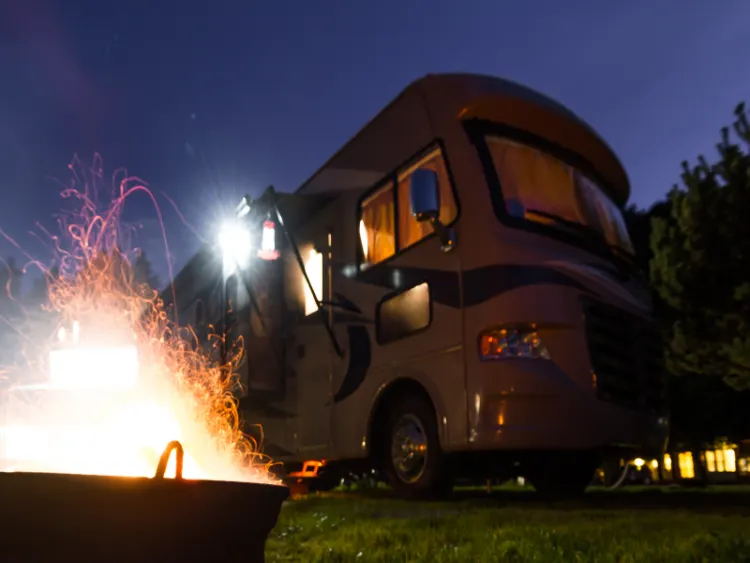
There are several factors to consider when choosing the right school bus for your conversion project. In this section, we’ll discuss the importance of size and type, engine and transmission, and rust and damage when deciding.
Size and Type
The size of the bus matters when it comes to conversion as it ultimately determines living space and overall design possibilities. School buses range from short buses with four windows to 45 feet long buses. A common way to estimate the length of a bus is by counting the number of windows and multiplying by 2.5. A typical school bus measured at 34 feet long, 7 ½ inches wide, and 10.4 feet tall can be ideal for a skoolie conversion.
When choosing a bus, consider factors such as desired living space, storage needs, and the complexity of the conversion process. Sometimes, it is better to choose a bus with slightly more space than required to allow for comfortable living and flexibility in design.
Engine and Transmission
School buses can come with different engine and transmission types. The most common type is the diesel engine, known for its durability and fuel efficiency. When considering engine and transmission, prioritize factors such as mileage, power, and overall reliability.
Keep in mind that the engine’s maintenance costs will depend on usage and travel distances. Budget around $1,000 to $1,500 a year for general maintenance. Lower mileage buses, such as those with around 150,000 miles, can be a good option for a skoolie conversion project.
Rust and Damage
Rust and damage on a school bus can significantly affect its longevity, usability, and overall cost of a conversion. When choosing a school bus, perform a thorough inspection to check for rust on the body, frame, and floor, especially around the wheel wells and lower panels. Take note of any dents or damage to the body, as well as any potential leaks or signs of excessive wear.
It is crucial to address any rust or damage issues before starting the conversion, as they can lead to more significant problems if left unattended. Make sure to factor in the cost of repairs and rust treatments when estimating the overall expense of your skoolie conversion project.
Planning the Conversion
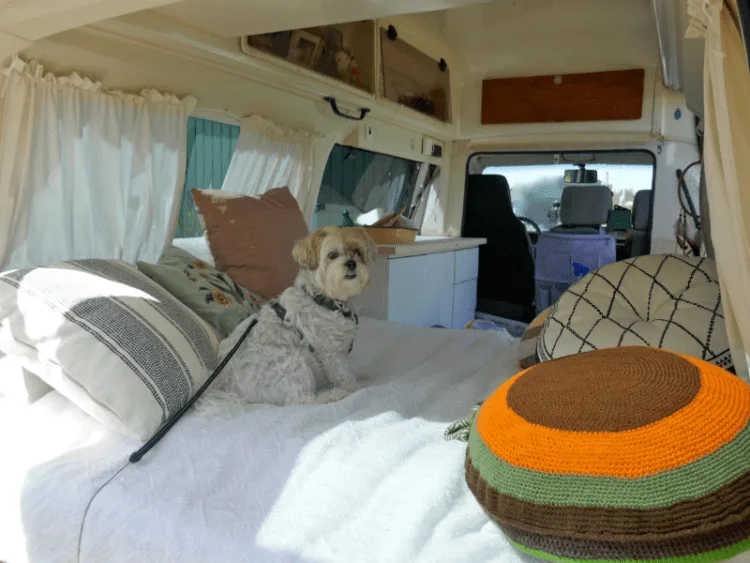
Layout and Design
When converting a school bus into an RV, the first thing to consider is the layout and design. It’s essential to think about the purpose of the space and what features are most important. While planning, consider the bus size, windows, doors, and other structural elements.
Consider areas for sleeping, cooking, bathing, and lounging inside the bus. Utilize vertical space by incorporating loft beds or storage shelves. As space is limited, use every inch efficiently and creatively.
Budget and Timeline
Budget plays a significant role in a school bus conversion, and it’s essential to plan thoroughly. Building materials like plywood, studs, and insulation generally cost around $3,000 – $5,000. However, additional features and finishing touches can increase the budget considerably.
It is also crucial to establish a timeline for the project. Break down the conversion into stages, such as demolition, construction, painting, and finishing. A clear schedule will help stay organized and keep the project on track.
See Related: Best Travel Bags for Car Seats
Legal Requirements and Insurance
Before starting a school bus conversion, ensure the project meets legal requirements and can be insured. Rules may vary depending on the location, so it’s essential to research local laws and regulations. This might include obtaining a special driver’s license or inspecting the vehicle.
Insurance is another vital aspect to consider. Some insurance companies may have specific requirements for converted school buses, such as meeting certain safety standards or installing particular features. Consult with several insurance providers to find the best coverage for your converted bus.
Preparing the Bus
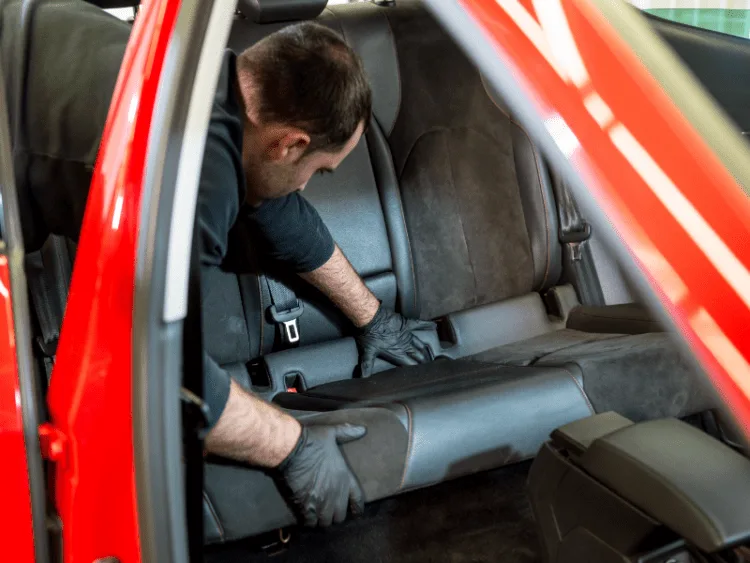
Converting a school bus into an RV, or skoolie, requires some preparation before the actual conversion process can begin. This section covers the key preparatory steps, including removing the seats and flooring and inspecting and repairing the bus frame.
Removing Seats and Flooring
The first step in preparing a school bus for conversion is to remove the seats. This process can be time-consuming and labor-intensive, but it is essential for creating a blank canvas to build your dream skoolie. Once the seats have been removed, the next step is to remove the flooring. This is important because it allows you to inspect the condition of the bus’s floor and make any necessary repairs or replacements.
Inspecting and Repairing the Frame
After removing the seats and flooring, it’s time to inspect the bus’s frame carefully. This includes checking for rust, structural damage, and other potential issues that might impact the safety and longevity of the skoolie conversion. Pay particular attention to areas where water or moisture may have accumulated over time, as these are prime locations for rust and corrosion.
If any rust or damage is found, it’s essential to address these issues before moving forward with the conversion. This may involve sanding down rusted areas, applying rust-inhibiting paint, or even replacing sections of the bus’s frame. A properly repaired and maintained frame will greatly increase the life of your skoolie, ensuring that you can safely enjoy your new mobile home for years to come.
See Related: Magic School Bus Lyrics: A Dive Into the Iconic Theme Song
Building the Living Space
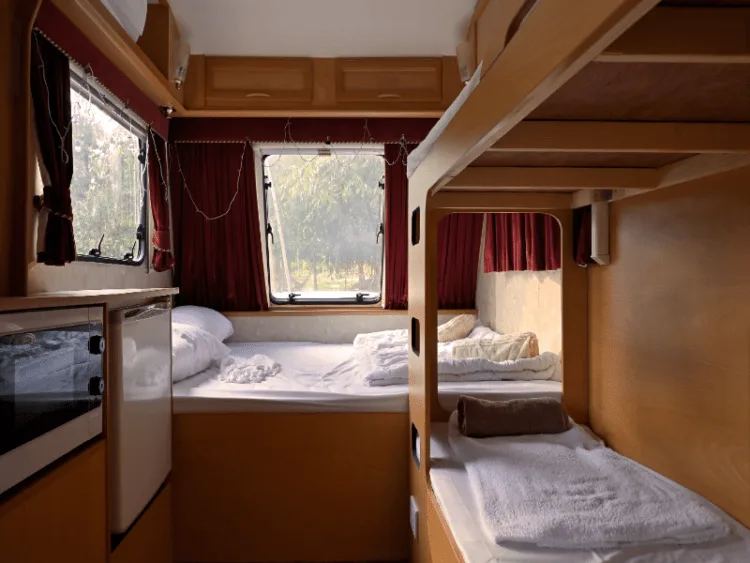
Insulation and Flooring
To begin building a comfortable living space in your school bus conversion, you’ll need to insulate the floors, walls, and ceiling. Insulation helps maintain a consistent temperature inside the bus and reduces exterior noise. Common insulation materials include spray foam, mineral wool, and rigid foam boards.
Once the insulation is installed, you can move on to the flooring. It’s essential to choose a durable and easy-to-clean material since it will experience heavy foot traffic. Common flooring options for skoolies include vinyl planks, laminate, and hardwood. Be sure to add a vapor barrier under the flooring to prevent moisture buildup.
Walls and Ceiling
After insulating your bus, the next step is to install the walls and ceiling. Aim for lightweight materials to reduce the overall weight of the bus. The most popular choices for skoolie walls and ceilings include plywood, tongue and groove boards, and beadboard. Be sure to paint or stain the walls and ceiling for a comfortable and inviting living space.
Electricity
Providing electricity in your bus involves choosing a power source, wiring the bus, and installing outlets and lighting. A common choice for off-grid skoolie living is solar power, which usually involves installing solar panels on the roof, connecting them to a charge controller, and setting up a battery bank for storage.
- Solar panels
- Charge controller
- Battery bank
- Inverter
Ensure you have a proper plan for wiring and consult with an electrician if necessary.
Plumbing
Plumbing is vital to your bus conversion, as it provides clean water for drinking, cooking, and bathing. You’ll need to install a freshwater tank, water pump, hot water heater, and grey tank to store used water.
When planning your plumbing, consider the location of your kitchen and bathroom fixtures, as well as access to water sources and waste disposal facilities.
Heating
Depending on the climate you’ll be traveling in, you may want to install a heating system in your bus conversion. Some popular heating options used in skoolies are propane heaters, wood stoves, and diesel heaters. Be sure to select a heating system suitable for your insulation and ventilation requirements.
Furnishing and Decorating
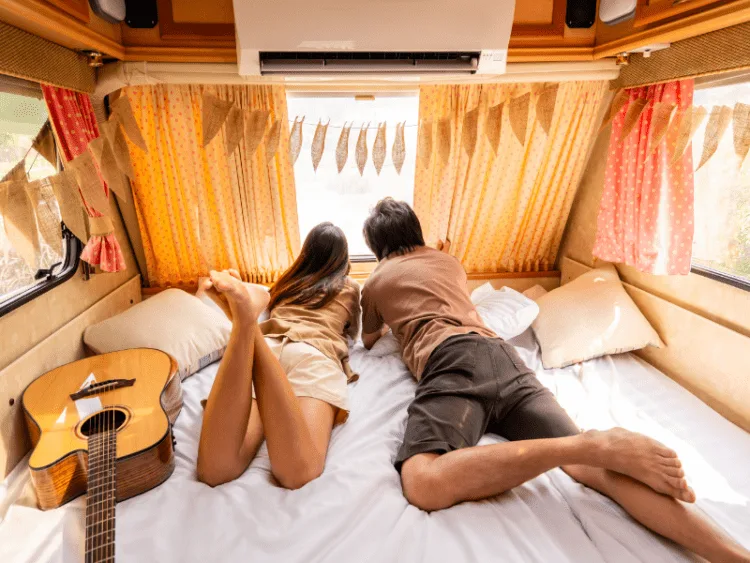
The furnishing and decorating process is crucial when converting a school bus into a functional and comfortable living space. This section will cover some ideas for creating an efficient kitchen area, maximizing sleeping and storage space, and setting up bathroom facilities.
Kitchen Area
Designing the kitchen area in a school bus conversion requires carefully considering space and functionality. Consider installing compact appliances and foldable countertops to make the most of the available space. This will ensure sufficient meal preparation and storage room without compromising other essential areas.
Some important aspects of a well-designed kitchen area include:
- Energy-efficient appliances such as a refrigerator, cooktop, and, if needed, an oven or microwave
- Ample counter space for food preparation and a sturdy sink for easy clean-up
- Storage solutions such as cabinets, shelves, and magnetic strips for organizing cooking tools
Sleeping and Storage Space
Maximizing sleeping and storage space is essential for comfortable living in a school bus conversion. One popular solution is to create a multifunctional space where a sleeping area can be easily transformed into a living or working space during the day.
Some ideas for maximizing sleeping and storage space include:
- Installing a Murphy bed or a loft bed to save floor space when not in use
- Using under-bed storage, ceiling-mounted storage nets, and wall-hung storage solutions to keep belongings organized
- Creating a convertible living area with a folding table and seating that can double as extra sleeping space when needed
See Related: Best Travel Containers for Toiletries: Top Picks
Bathroom Facilities
Designing a functional and efficient bathroom in a school bus conversion often requires creative space utilization. Ensuring privacy and incorporating basic amenities within a small footprint without compromising comfort are key considerations in designing bathroom facilities for a school bus conversion.
Some important aspects of a well-designed bathroom include:
- A compact toilet, either a composting toilet or a chemical toilet, depending on preferences and regulations
- A small shower or bath area with a drain and a water-resistant floor
- Space-saving storage solutions for toiletries and towels, such as wall-mounted cabinets or shelves
Maintenance and Upkeep
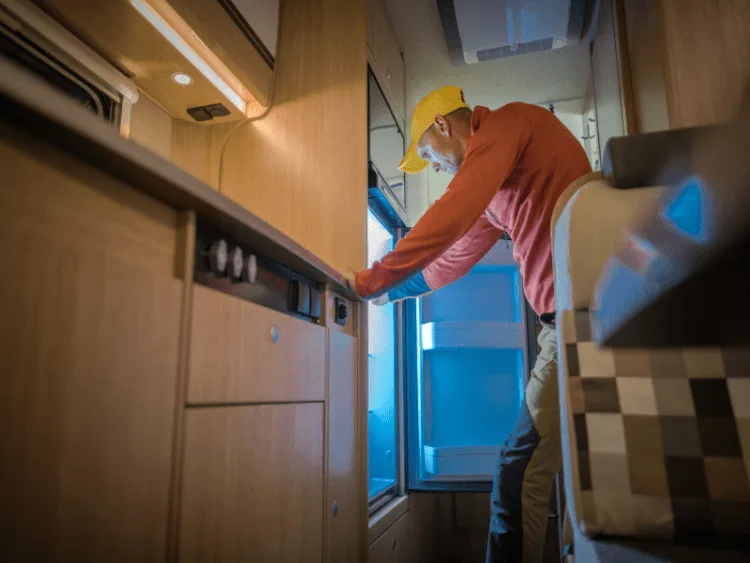
Maintaining a converted school bus, also known as a skoolie, requires regular attention to ensure its reliability and longevity. This section will provide information on the essential aspects of maintenance and upkeep for a skoolie.
First and foremost, it is crucial to budget for general maintenance expenses. Expect to allocate around $1,000 to $1,500 annually for this purpose. It’s worth noting that this figure may vary depending on the number of miles traveled within a year.
Regular vehicle inspections are necessary to identify any potential issues early on. This includes checking the:
- Engine oil and filters
- Transmission fluid
- Brake fluid
- Coolant
- Tires: pressure, tread, and alignment
- Belts and hoses
Another aspect to consider is the upkeep of the living space within the skoolie. This involves:
- Cleaning and maintaining appliances such as fridge, stove, and air conditioner
- Inspecting plumbing and electrical systems
- Checking for leaks or water damage
- Sealing any cracks or gaps in windows, doors, or roof
It is essential to have a basic set of tools available for mechanical repairs and upkeep, as well as to acquire the necessary knowledge or expertise to tackle such tasks. Patience, persistence, and dedication are vital attributes when maintaining and caring for a skoolie.
Tips for Living in a Converted Bus

Living in a converted school bus, also known as a skoolie, can be an exciting and affordable alternative to traditional housing. However, there are several factors to consider for a comfortable and efficient skoolie lifestyle. This section will provide some helpful tips for living in a converted bus.
Firstly, it’s essential to insulate the bus to maintain a comfortable temperature year-round properly. Skoolies can get uncomfortably hot or cold without proper insulation. Use spray foam, rigid foam boards, or wool to insulate the walls, ceiling, and floor.
Space management is critical in a skoolie. Make sure to design your layout wisely, utilizing every inch for storage, living, and workspace. Multi-purpose furniture and collapsible items can save considerable space and make the bus feel larger. If possible, install a skylight or additional windows to bring in more natural light and create an open, airy atmosphere.
Energy management is another crucial aspect of skoolie living. Consider installing solar panels on the roof or investing in a portable generator for off-grid power. Ensure you have a reliable and efficient battery system to store and manage your energy efficiently.
- Conserve water by installing low-flow fixtures and reusing greywater for non-potable purposes.
- Invest in a composting toilet to save water and reduce waste.
- Choose energy-efficient appliances and use LED lights to reduce energy consumption.
Maintaining your skoolie is vital for long-term living. Regularly check your systems and components, such as plumbing, electrical, and mechanical, to avoid issues down the road. Don’t forget to pay attention to the exterior, including tires, lights, and rust prevention methods.
In conclusion, living in a converted school bus can be a rewarding experience with proper planning, smart layouts, and proactive maintenance. Keep these tips in mind to create a comfortable and functional skoolie home.
Related Resources:

Leave a comment